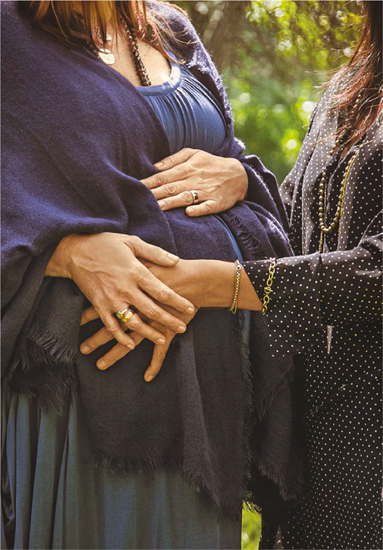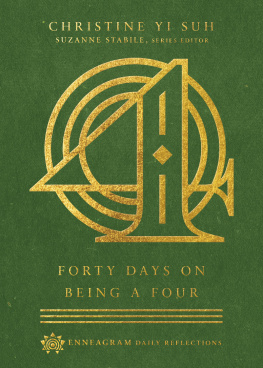

Published in 2016 by Stewart, Tabori & Chang
An imprint of ABRAMS
Text copyright 2016 Heng Ou, Amely Greeven, and Marisa Belger
All rights reserved. No portion of this book may be reproduced, stored in a retrieval system, or transmitted in any form or by any means, mechanical, electronic, photocopying, recording, or otherwise, without written permission from the publisher.
Library of Congress Control Number: 2015948994
ISBN: 978-1-61769-183-6
eISBN: 978-1-61312-941-8
EDITOR: Holly Dolce
DESIGNER: Laura Palese
PRODUCTION MANAGER: Anet Sirna-Bruder
PHOTOGRAPHER: Jenny Nelson
FOOD STYLIST: Nicole Kruzick
Stewart, Tabori & Chang books are available at special discounts when purchased in quantity for premiums and promotions as well as fundraising or educational use. Special editions can also be created to specification. For details, contact specialsales@abramsbooks.com or the address below.

None of what follows is intended to replace the care and advice offered by your physician or health-care provider. Please use the food and advice in The First Forty Days to enhance and improve your day-to-day experience, not to remedy actual medical issues. However, should you experience any unusual or uncomfortable symptoms before or after the baby arrives that arent resolved by your health-care provider, use this book as a launching pad toward an experienced Chinese medicine doctor. He or she may be able to offer you herbs and treatment that can be extremely effective in supporting your body to heal and find its balance for the future.

115 West 18th Street
New York, NY 10011
www.abramsbooks.com
WITH GRATITUDE...
To my children Khefri, India, and Jude; and to their father who helped me create these three bright stars.
To my courageous writers Amely Greeven and Marisa Belger, who, inspired by the challenges of their own postpartum experiences, took on this project with me, determined to create a guidepost for all the mothers who will come after them; and to my agent, Marc Gerald, the connector who brought us together. Without this dynamic literary trio, this book would not have been seen by Holly Dolce, Rebecca Kaplan, and the rest of the fabulous Abrams team.
Big thanks and love to all the experts who shared their wisdom and the beautiful mothers who invited us into their first forty days, giving us a peek into daily life with their new babies. Thank you Jenny Nelson, for your unique photographic perspective and invaluable organizational skills; Nicole Kruzick, for the luscious food styling; and to all of the guides and friends who make up my family: Linda Costigan, Ani Compton, Jessica Janney, Stacy Sindlinger, Toni Spencer, Ian Scanlan, Joe Sturges, Rob Lam, Davi Khalsa, James Ballard, Hsuan Ou, my mama, and the MotherBees team.


A
INTRODUCTION
The first forty days is a period of time unlike any other. It is a short season of life that follows the delivery of your childan almost six-week-long period that arrives after many weeks of pregnancy and who knows how many hours of laborin which you recover from birth, your baby unfurls slowly into the world of bright lights and sounds, and together you devote yourselves to forging your relationship outside the womb.
Though brief, it is a time of amazing intensity and massive adjustment.
Your body transformsagainand your heart throbs with more feelings than you ever knew possible. Your internal rhythms ping-pong as days and nights merge. Your stamina and serenity get tested like never before. Your connections to the world you knew before loosen, or even come undone, and your sense of who you are begins to change and morph.
In other times, and in other places around the world, a postpartum period of healing and adjustment was expected and allowed. After the rigorous and demanding act of birth, it was considered critically necessary for the whole familyand for society at largethat a woman be given the first forty days to heal and rest. Other people in her community would feed her, nurture her, and take all responsibilities off her plate, so that she could focus on one thing only: transitioning healthily and happily from expectant woman to mother.
For the first forty daysor sometimes the first thirty or twenty-one, depending on the culturea new mother stayed secluded from the busy stream of life, tucked indoors with her infant at her side. She received special meals to rebuild energy, replenish lost nutrients, and help her body produce breast milk. She followed traditional practices of keeping rested and warm to prevent exhaustion and depletion.

The understanding was that the new mother was as vulnerable as her newborn, requiring her own steady stream of attention and care. A dedicated time of postpartum recovery could help to keep future illnessand equally important, depressionat bay.
Today in the West, we are waking up to the importance of cocooning baby in the weeks following birth. The understanding that he (or she) is not quite ready to meet the world-at-large when he emerges and is still in an early stage of development thats come to be known as the fourth trimester has awakened us to the value of holding him close and sheltered for some weeks, so he can shift slowly and gradually into life outside the womb.
But somehow, we have forgotten the time-honored wisdom that this special cocoon of care should extend to the mother as well. In those first forty days, which roughly correlate with the six-week phase that Western medicine calls the postpartum period, the old ways teach that an amazing opportunity presents itself to a woman. During this time, she can revitalize herself and replenish her reserves, creating a solid foundation from which to tackle the demands of mothering (whether for the first time, the second, or more). Furthermore, they teach that with the right postpartum care, a mother can preserve her reproductive health for future children or eventually experience an easy menopause, aging gracefully over the decades to come.
Perhaps because pregnancy and birth get all the magazine covers and headlinesno surprise, as these events sell more stuffweve overlooked this last part of the childbearing story. A womans postpartum experience might be given a brief nod at the end of a pregnancy book, or thirty seconds of footage at the end of a TV show, but a deeper look almost never occurs. Rather than get invited to take a sacred time-out after delivering her child, the new mother is more likely met with pressure to bounce backback to her pre-pregnancy productivity, back to her pre-pregnancy body, and back to her pre-pregnancy spirits.
But when it comes to becoming a mother, there is no back; there is only through. After birthing her child, every woman must pass through this initial adjustment phase. It is a strange and beautiful limbo zone that is both exhausting and exciting, mysterious and monotonous. When she arrives at the other side of the postpartum phase after roughly a month and a half, she will most certainly be facing forward, prepared to take her next steps into motherhood.
Next page



















